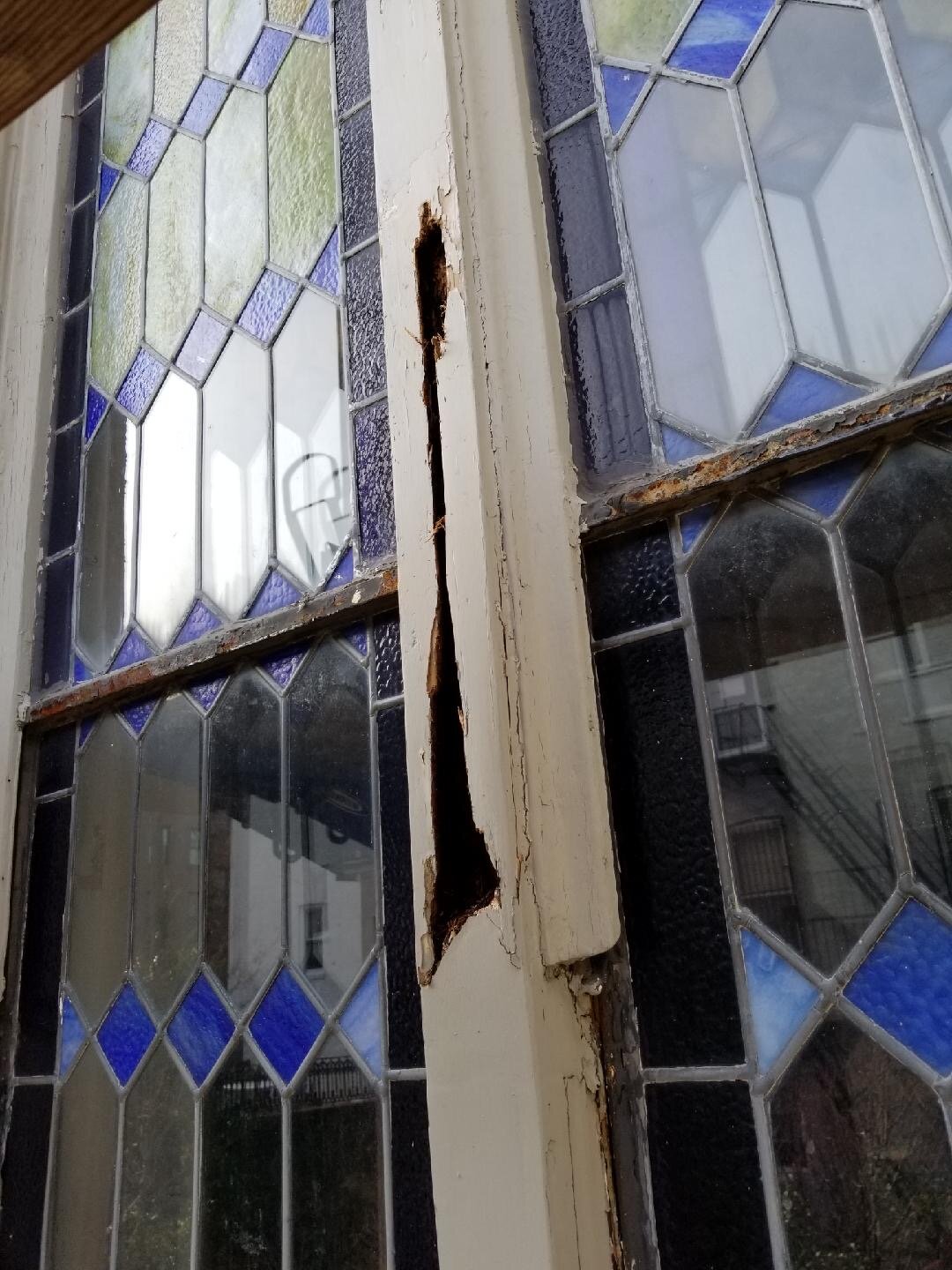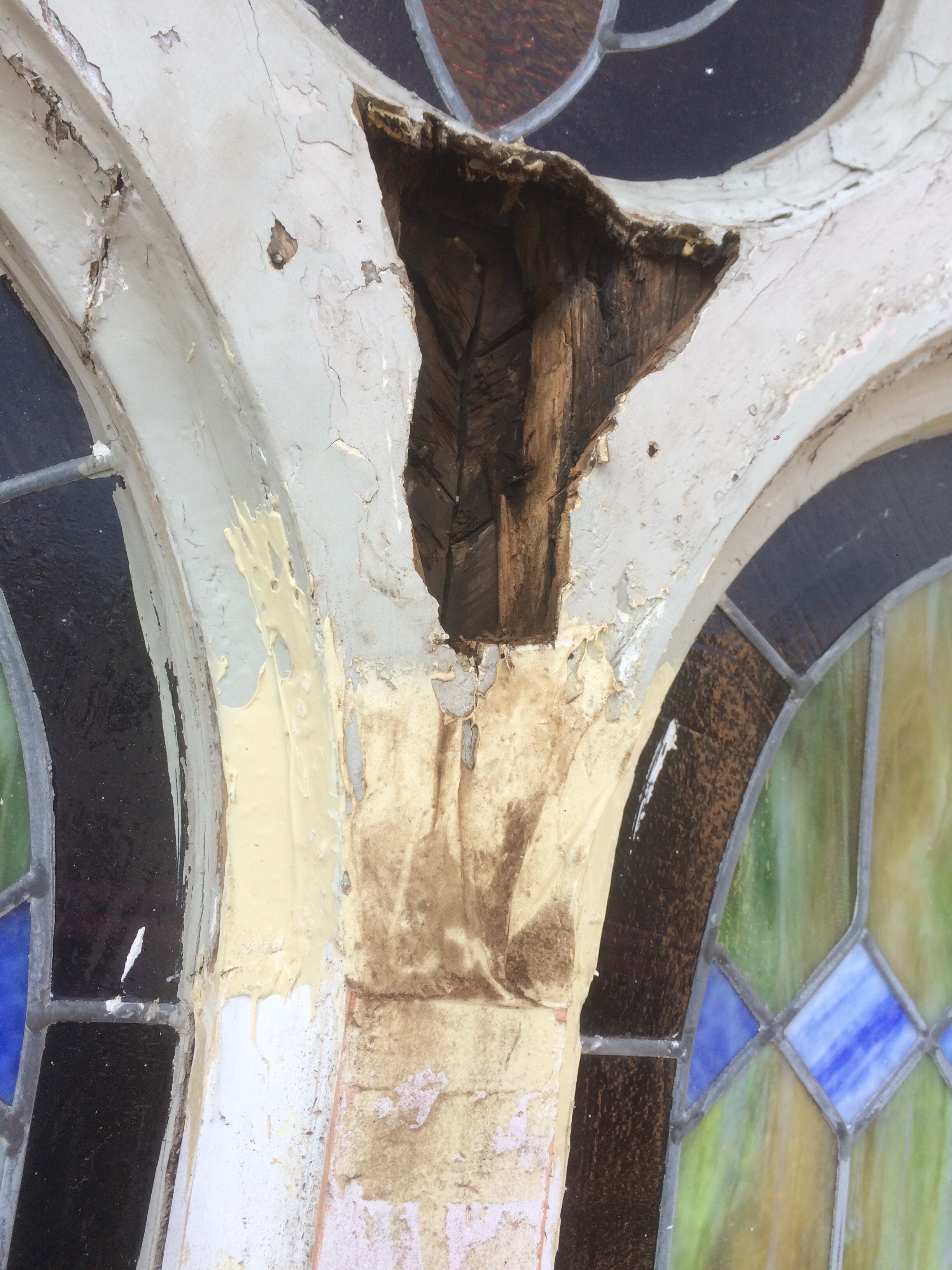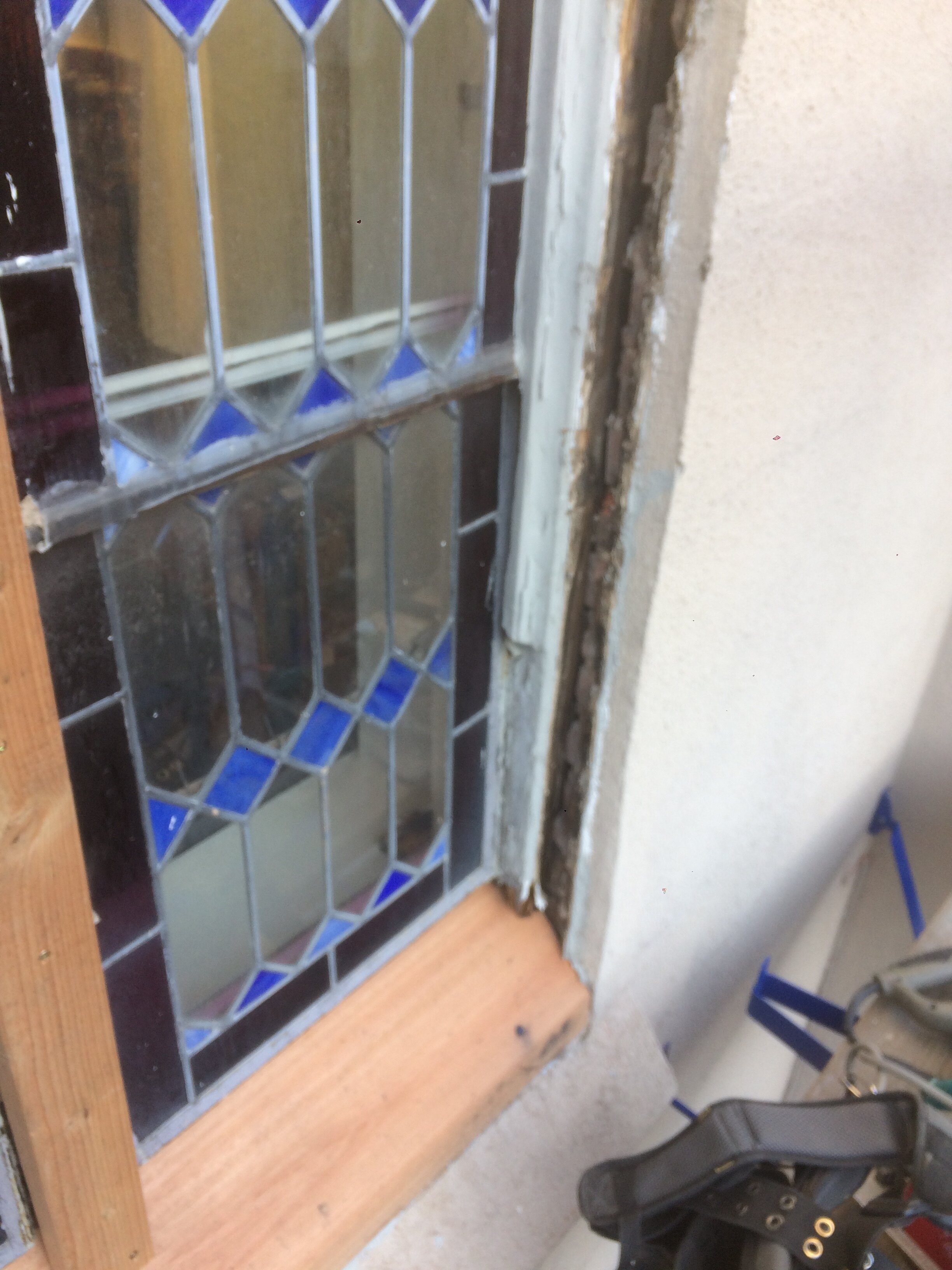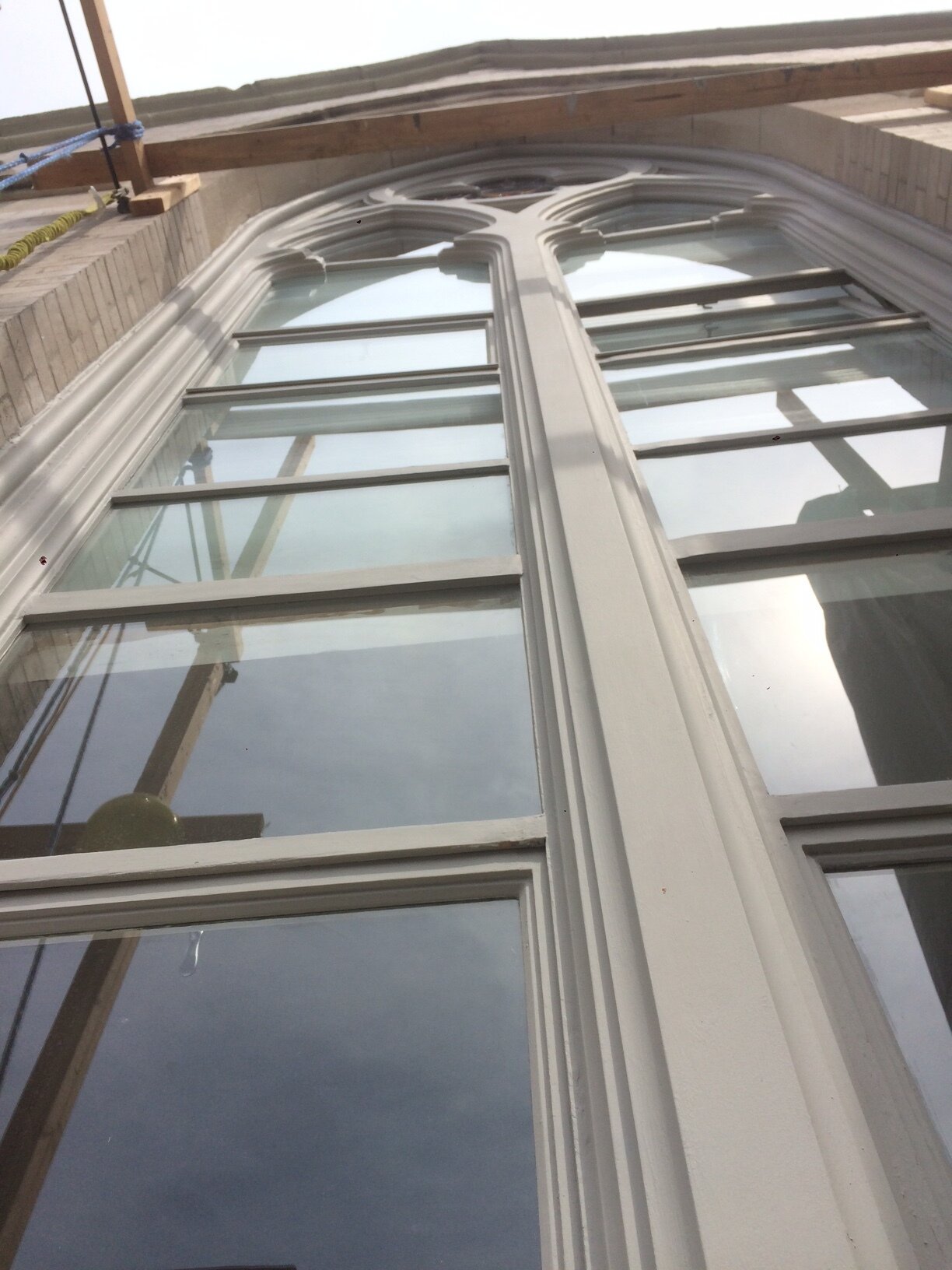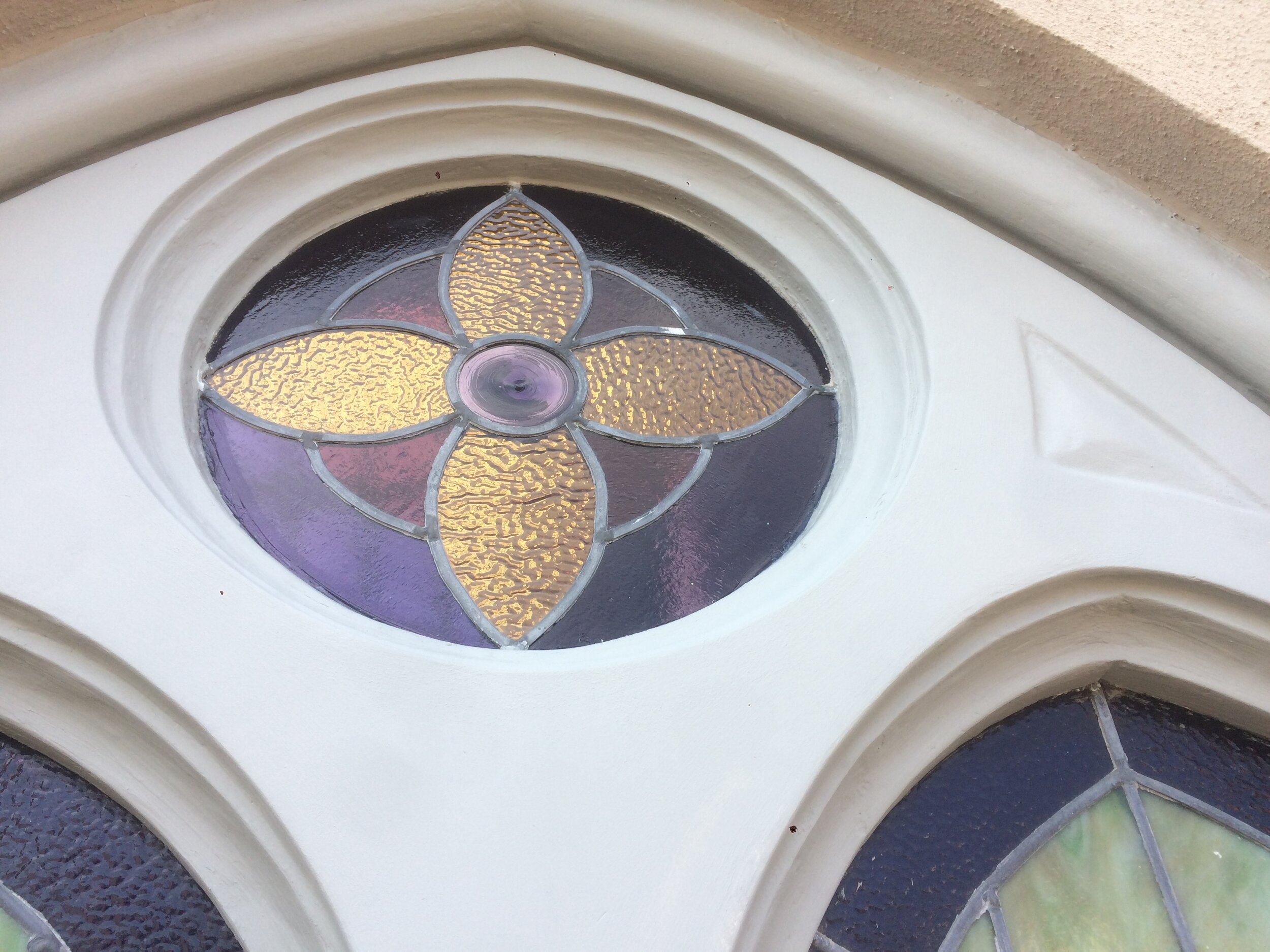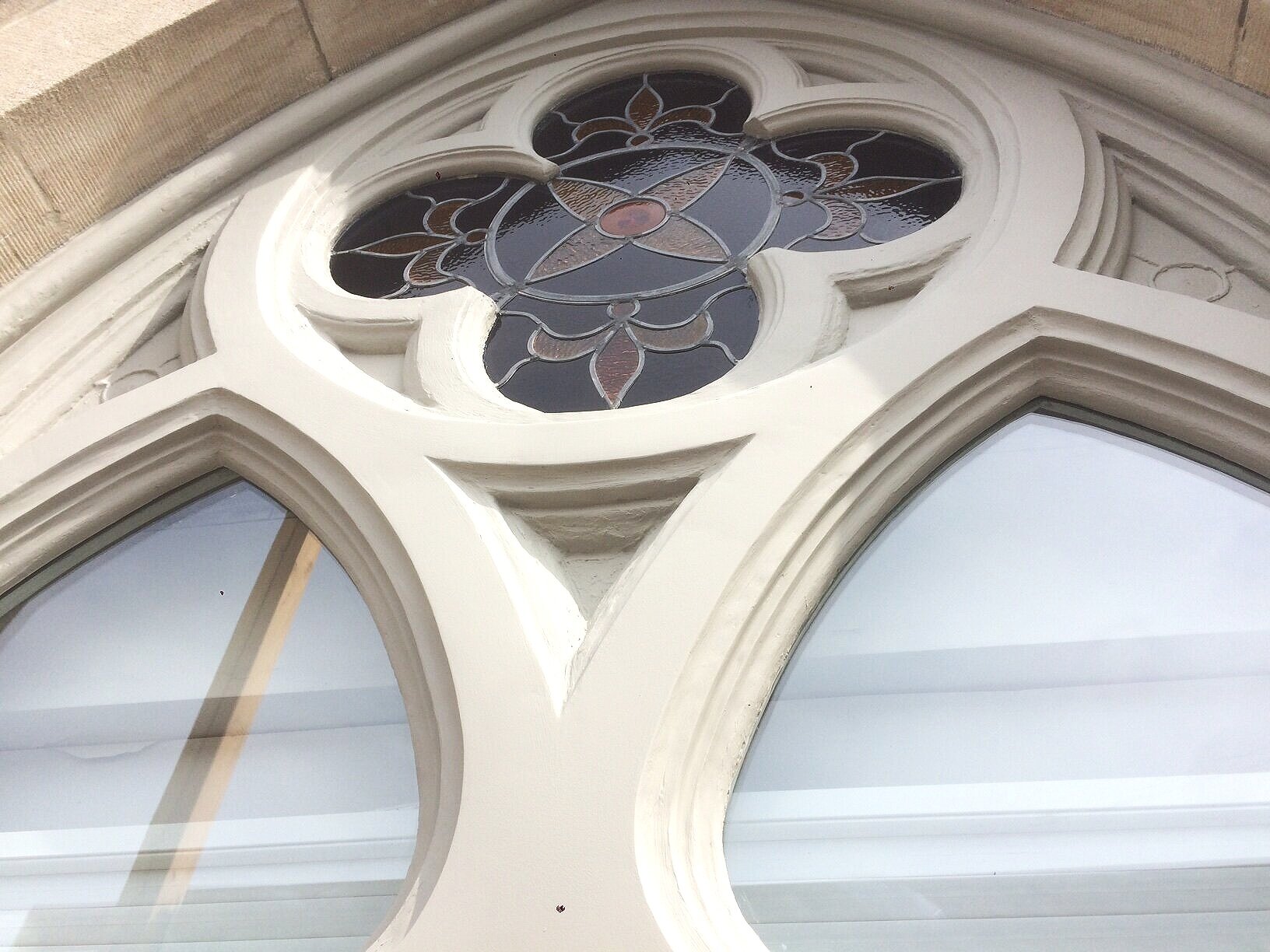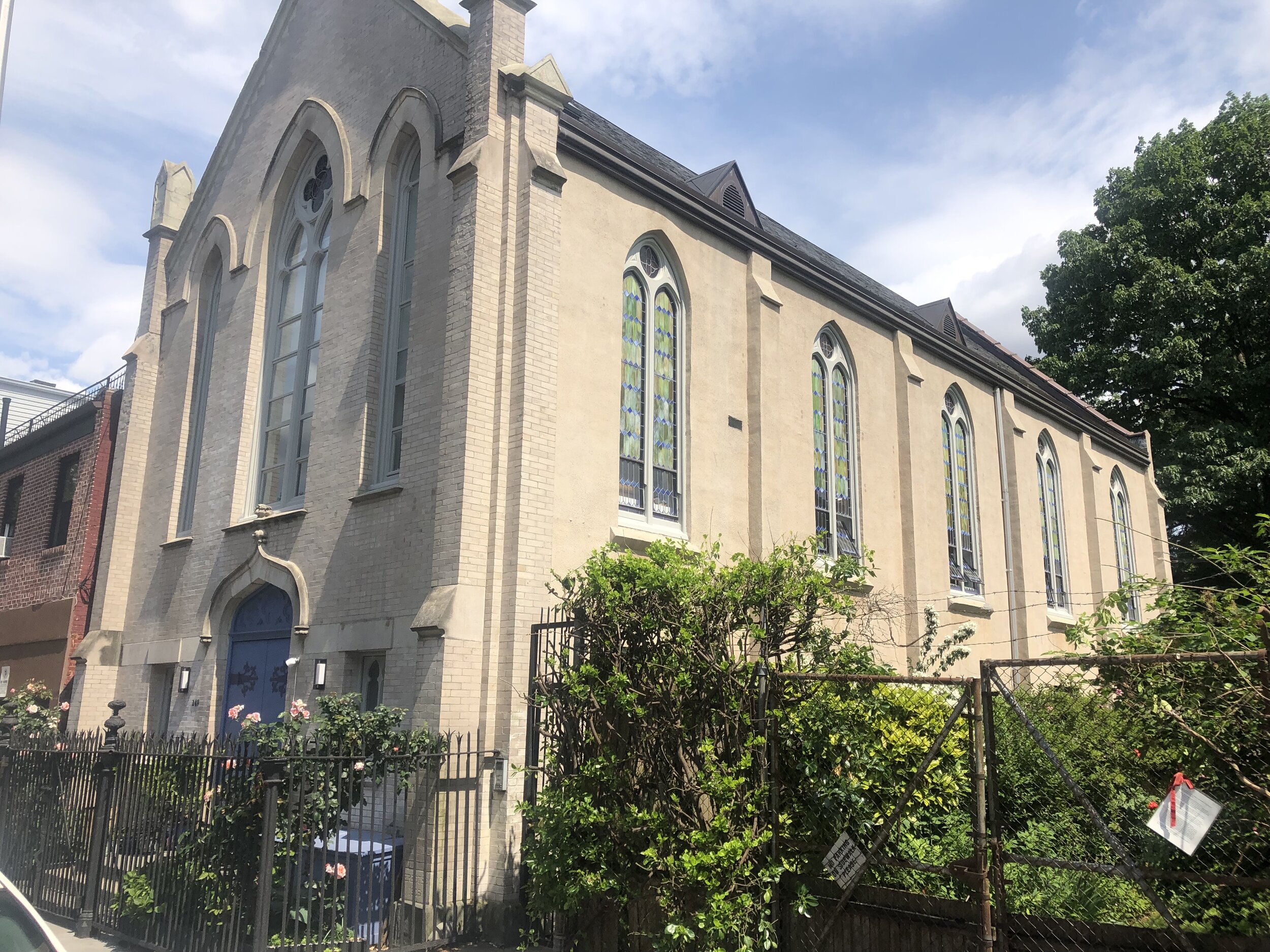The former Trinity German Lutheran Church where Right Path Windows And Doors restored numerous oversized windows.
A 1940’s NYC Tax Photo of 251 DeGraw St.
Long noted for its bright blue doors, this former church is located in the Cobble Hill neighborhood of Brooklyn. The Gothic Revival style church was designed in 1905 by Theobald Englehardt, the son of German immigrants, as the Trinity German Lutheran Church. Curiously, the cornerstone is dated 1885.
“A handsome molded ogee arch crowns the central doorway, and the long windows above have corniced pointed arches,” according to the original Cobble Hill District application.
In addition, “double lancets lining the interiors narrow sanctuary have retained their colorful glass panels,” as noted in Sacred Havens of Brooklyn: Spiritual places and Peaceful Grounds.
The building later housed a congregation for the Seventh Day Adventist Church.
This is where Paul Mulcahy and the team from Right Path Windows & Doors enter the story of the church turned duplex home.
Windows on the front, street-facing facade as well as the shadier Clinton St. side of the building were in need of restoration.
A view of the narrow side yard on the Clinton Ave.-facing side of the property.
There were 12 windows, all of which were 12’ tall. As one would expect in a former church, they featured multiple stained glass components as well as intricate architectural details.
One of the challenges of this project, as each one has, was the narrow footpath in the side yard where we had to work. Only limited space was available.
In order to address the windows, we set up a scaffolding system using pump jacks rather than traditional scaffolding system.
No wider than a couple of boards, this created maximum usable space within a minimal area.
Once we were able to see the windows up close, we could see how decayed they were, particularly at the base.
Their poor condition had been disguised under paint until the auto body filler started flaking off that was used in previous repair efforts.
As can be seen in the slideshow at left, the rot that wasn’t obvious before the restoration process began was readily revealed as the old layers of paint were sanded off.
We chose to use a marine grade epoxy, Chemfix. We did a lot of Dutch patching and scraping and sanding and digging.
Wood window restoration is a tedious process, as every square inch of the unit must be addressed.
In addition, we replaced the broken stained glass components.
The bottom foot was the site of the main damage in all of the windows.
Rather than waste time trying to restore the existing, we ran new mahogany brick molding created with custom knives made to match the original profile.
In addition to saving a huge amount of time, the new molding ensured a more weathertight seal plus offered greater longevity with all new wood.
Now that these windows have seen the proper attention, they are sure to last another century or more.
Watch the video of this project coming together:
RELATED POSTS:







